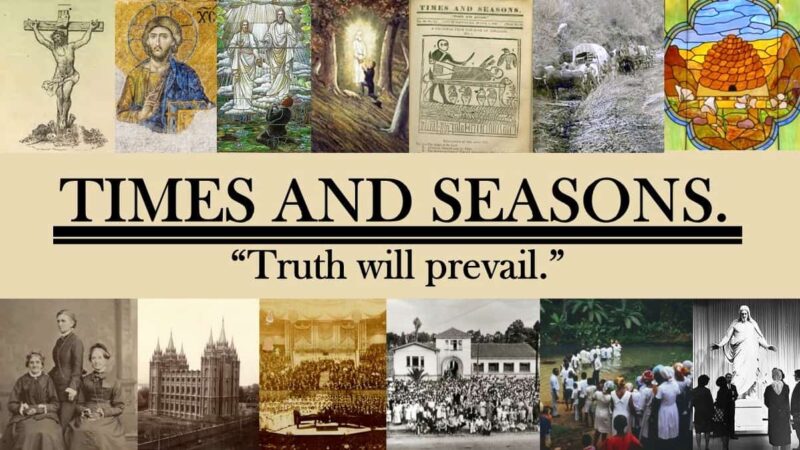The Palgrave Handbook of Global Mormonism, edited by R. Gordon Shepherd, A. Gary Shepherd, and Ryan T. Cragun, is a landmark anthology that shifts the center of gravity in Latter-day Saint scholarship from a nineteenth-century, Utah-centric narrative to a nuanced, data-rich exploration of Mormonism as a global religious tradition. With 31 chapters contributed by 42 scholars, the volume offers a comprehensive portrait of a faith that now claims nearly 17 million members in close to 190 countries.
The book is organized into five sections. Part I lays the historical and organizational groundwork, from early internationalization in the 1830s to worldwide missionary strategies and demographic diffusion since World War II. Part II addresses pressing twenty-first-century challenges: fluctuating growth rates, retention struggles, shifting gender roles, LGBTQ inclusion, and generational disaffiliation. Part III delivers richly detailed regional and national case studies—spanning Latin America, Oceania, Europe, Africa, and Asia—that illuminate how Mormonism adapts to diverse cultural, political, and religious contexts. Part IV examines ethnic and racial diversity within North America, focusing on Black, Latinx, and Native American Latter-day Saints negotiating identity in a predominantly white church. Part V offers timely reflections, including an analysis of the Church’s real-time response to the COVID-19 pandemic and a sober assessment of the prospects and problems facing The Church of Jesus Christ of Latter-day Saints as a truly global institution.
One of the handbook’s strengths is its methodological pluralism. Contributors draw on historical narratives, ethnographic fieldwork, statistical modeling, and personal narratives. This variety allows the book to capture both institutional structures and lived religion, while also exposing tensions between official church policy and grassroots cultural realities. The editors and authors are careful to distinguish between “The Church of Jesus Christ of Latter-day Saints” as an institution and the broader “Mormon” culture—a useful analytical tool, though not always cleanly maintained given the fluidity of identity and terminology.
The book is a touchstone study on the experience of members of the Church on a global level (along with a few related denominations, like Community of Christ). I discovered this book while I was examining what sources exist at this point for global Mormonism and found it repeatedly referenced, especially for its chapters on Mexico and Africa. It is not a stretch to say that the Palgrave Handbook is the most robust, holistic, and scholarly reference on global Mormonism on the market—covering institutional history, demographic trends, cultural adaptation, and internal challenges. BYU Studies is the outlet that has most consistently focused on international content, with its book The Worldwide Church: Mormonism as a Global Religion being the closest equivalent in recent years that I could find. The major difference is that The Worldwide Church is based on a symposium and provides a focused, faith-informed reflection on the Church’s international expansion and cultural dynamics, illustrated through specific regions and institutional themes. University of Illinois Press, Greg Kofford Books, and (to a lesser extent) Oxford University Press are the other outlets that have done the most to cultivate the nascent field of global Latter-day Saint studies, though none of these three have offered an equivalent glimpse into global Mormonism in a single volume. Instead, they have tended to offer specific, detailed studies. In many cases, however, the major players in the field who wrote those studies made a contribution to the The Palgrave Handbook of Global Mormonism.
In sum, The Palgrave Handbook of Global Mormonism succeeds in reframing Mormon studies for the twenty-first century. It demonstrates that to understand Mormonism today, one must look beyond Utah to Ghana, Brazil, Japan, the Pacific Islands, and immigrant congregations in North America. The result is an indispensable reference that will likely remain a foundational text in global Mormon studies for years to come.

Comments
6 responses to “The Palgrave Handbook of Global Mormonism, a Review”
It’s on global Mormonism but how many of the authors are from outside of the US? We still seem small enough that while members write on black issues and North Americans write on everywhere else.
*white
Also we seem small enough Mormon Studies folks write on sociology or economics or sociologist speak on history.
I think in 96 we passed a global threshold but 30 years later we have become a global Church. Maybe it takes another 30 years to have global academic representation?
Here’s the list of chapters and authors, RL. Without looking up each author individually, it looks like at least a half dozen are from outside North America.
RL, your comment isn’t far off for the field in general, but as Jonathan pointed out, there are a lot of people from around the world who contributed. Most of the chapters on Mexico, Europe, New Zealand, and Japan had authors from those regions.
Thank you and I should read the book before I critique it but that is an expensive book. The price comes down eventually right?
RL, I hope that it will!